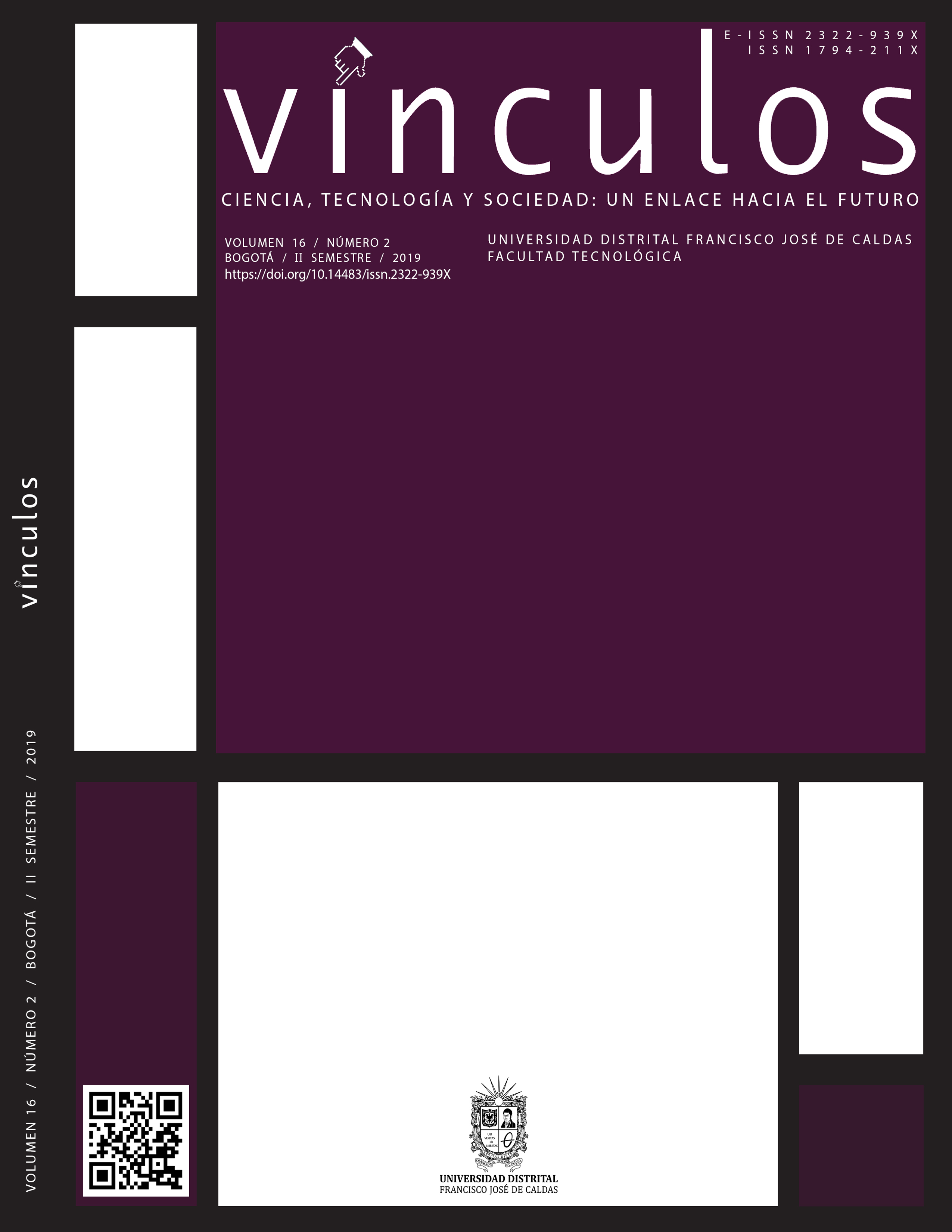DOI:
https://doi.org/10.14483/2322939X.15463Publicado:
2019-11-20Número:
Vol. 16 Núm. 2 (2019)Sección:
Entorno SocialEstudio y comparación en sistemas WTP basados en SCRM
Study and comparison in WTP systems based on SCMR
Palabras clave:
Conformal, Conventional, Misalignment, SCMR (en).Palabras clave:
Conformal, Convencional, Misalignment, SCMR (es).Descargas
Resumen (es)
La transmisión inalámbrica de energía eléctrica es un tema que tiene una amplia aplicación en la ciencia, así que es necesario identificar cuál de sus diversos modelos se acoplan mejor de acuerdo con un requerimiento. Por tanto, este estudio pretende comparar diferentes modelos SCMR y presentar sus ventajas y desventajas, dicha comparación se realizó a partir de una simulación en el software COMSOL Multiphysics diseñando las diferentes antenas con sus valores respectivos de frecuencia de resonancia, después se realizó la implementación y se corroboró los comportamientos esperados. Luego de realizar diversas pruebas se identificaron los beneficios de cada sistema SCMR propuesto, y se analizó que los sistemas de transmisión inalámbrica SCMR se pueden adaptar a cualquier aplicación, solo que es necesario identificar cuál de sus variaciones de parámetros es la adecuada. El mayor desempeño se presenta cuando resuenan en la frecuencia donde los componentes presentan su mayor factor de calidad
Resumen (en)
The wireless transmission of electric energy is a subject that has a wide application in science, so it is necessary to identify which of its various models are best suited according to a requirement, in this study we intend to compare different SCMR models and present their advantages and disadvantages. The comparison was made from a simulation in the COMSOL Multiphysics software, designing the different antennas with their respective resonance frequency values, then the implementation was carried out and the expected behaviors were corroborated. After performing various tests, the benefits of each proposed SCMR system were identified. It was possible to analyze that SCMR wireless transmission systems can be adapted to any application, only that it is necessary to identify which of its parameter variations is appropriate. The highest performance occurs when they resonate at the frequency where the components have their highest quality factor.
Referencias
[2] O. Jonah, et al, “Orientation insensitive power transfer by magnetic resonance for mobile devices,” IEEE Conference Wireless Power Transfer (WPT), 2013. IEEE ExploreDigital Library. Julio 2013. https://doi.org/10.1109/wpt.2013.6556868
[3] H. Hu and S. V. Georgakopoulos, “Design of optimal and broadband conformal scmr systems,” in Antennas and Propagation Society International Symposium (APSURSI), 2014 IEEE, pp. 1345–1346, IEEE, 2014. https://doi.org/10.1109/aps.2014.6904998
[4] A. S. M. Sayem and H. Afrin, “Wireless power transfer via strongly coupled magnetic resonance,” International Journal of Innovative Research in Engineering & Management (IJIREM), Vol. 2, Issue-1, Enero 2015.
[5] H. Hu and S. V. Georgakopoulos, “Analysis and design of broadband wireless power transmission system via con- formal strongly coupled magnetic resonance,” in Wireless and Microwave Technology Conference (WAMICON), 2014 IEEE 15th Annual, pp. 1–4, IEEE, 2014. https://doi.org/10.1109/wamicon.2014.6857760


2.png)



